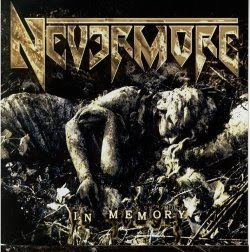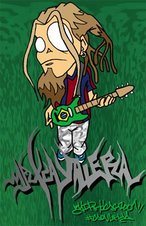
Hear our Mother crying in silent tears
For she can't speak, she only cries
She cries to me
Draw the final curtain, for senseless thoughts
And senseless hands have shaped the future
Is it not what you thought would come?
Or maybe people no longer care for Mother Earth
Earth Mother is screaming, we can't live without her
No time left for dreaming here, she knows
Have we forgot our future?
Earth Mother, life giver, we can't live without her
So foolish, men who say they don't care
They'll be gone anyway
Feel our Mother nurture, for we are the children
Suckling at her breasts she gives us life,
she give us all we need
What do we give in return for life we take from her?
Oh, forgive us Mother, forgive us
For we know what we do
We've blistered and burned you
Our kind may soon be through, we've raped you
Earth Mother is screaming,
we can't live without her
No time left for dreaming here, she knows
Have we forgot our future?
Earth Mother, life giver,
we can't live without her
So foolish, men who say they don't care
They'll be gone anyway
Earth Mother is screaming,
we can't live without her
No time left for dreaming here, she knows
Have we forgot our future?
Earth Mother, life giver,
we can't live without her
So foolish, men who say they don't care
They'll be gone anyway
Think of our little ones,
for whom the world has just begun....
A lament about the destruction of environment. Earth is our mother and life giver, but people commit matricide. Of course people don’t kill Earth, they only commit suicide, but the song has a matriarchal narration that recalls us theories of visions of matriarchal societies in primitive ages that live in harmony with nature, giving her the form of a female godess and live relatively in peace and social equality, and were vanished by patriarchal invaders who imposed their culture of war, violence, male prevalence, hierarchy and gradually removal from Mother Earth’s embrace. God is male, violent and now he lives in the sky, not in earth.
In reality, such narrations seem not to be completely a myth. Many researchers refer to ancient remnants that shows a clear discontinuity boundary between former matriarchal and relatively peaceful small scale societies and later patriarchal societies based in violence, kingdoms of power, and urban expansion that their impacts are still present in social evolution.
Gimbutas' findings reveal an ancient widespread culture which flourished throughout Europe between 6500 and 3500 BCE, in the era historians call the Neolithic. This civilization was radically different from images of kings, warriors, and conquering gods that previously dominated our view of the past. "This was a long-lasting period of remarkable creativity and stability, an age free of strife. Their culture was a culture of art." -- Marija Gimbutas
Her excavations and interpretations show, at the dawn of civilization, a society stretching across Europe from the Danube to the North Sea in which women had high status and power along with men. Egalitarian and peaceful, "Old Europe" existed for thousands of years without war. Hundreds of female figurines were found. Paintings, sculptures of birth-giving goddesses, pottery figures of bird headed deities and sacred serpents all honored the regenerative powers of nature.
"The Goddess in all her manifestations was a symbol of the unity of all life in Nature. Her power was in water and stone, in tomb and cave, in animals and birds, snakes and fish, hill, trees, and flowers."
-- Marija Gimbutas
http://www.gimbutas.org/marija/aboutmarija.html
A systematic review of archaeological and historical materials suggests that patrism first developed in Saharasia after c.4000 BCE, the time of a major ecological transition from relatively wet grassland- forest conditions to arid desert conditions. Settlement and migration patterns of patrist peoples were traced, from their earliest homelands in Saharasia, to explain the later appearance of patrism in regions outside of Saharasia. Prior to the onset of dry conditions in Saharasia, evidence for matrism is widespread, but evidence for patrism is generally nonexistent. It is argued that matrism constitutes the earliest, original, and innate form of human behavior and social organization, while patrism, perpetuated by trauma-inducing social institutions, first developed among Homo Sapiens in Saharasia, under the pressures of severe desertification, famine, and forced migrations.
http://www.orgonelab.org/saharasia_en.htm
You can hear some songs in you tube:
Matricide
Believe in nothing
What tomorrow knows
I voyager
Enemies of reality
Final product
The river dragon
12 June, 2008
Matricide by Nevermore, EP: In Memory 1996
Αναρτήθηκε από
candiru - stratis aigaiopelagitis
στις
8:46 AM
![]()
Ετικέτες 90s decade, heavy metal, Nevermore, views and written texts
Subscribe to:
Post Comments (Atom)



No comments:
Post a Comment